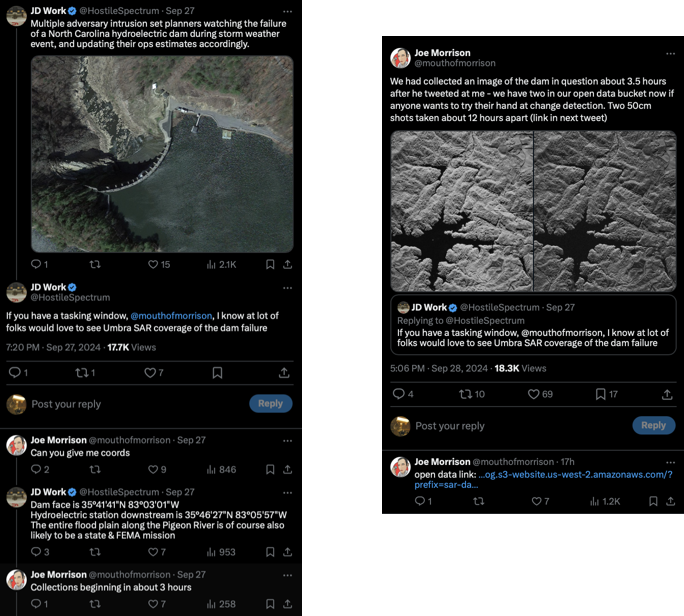The intelligence collection landscape is experiencing a profound transformation, driven by the democratization of open-source intelligence (OSINT) and the proliferation of advanced consumer technologies. These interconnected developments not only enhance the operational capacity of formal intelligence agencies but also empower informed individuals to contribute directly to intelligence operations, crisis management, and disaster relief in ways previously unimagined.
The origins of OSINT can be traced back to the Cold War, when intelligence analysts systematically harvested publicly accessible information to gauge the capabilities of adversaries. Initially reliant on traditional media—newspapers, radio transmissions, and public records—early OSINT was a supplement to classified methods. However, the digital revolution of the late 20th century, particularly the rise of the internet and ubiquitous personal communication devices, dramatically expanded both the volume and diversity of available open-source data. Social media platforms, online forums, and personal blogs quickly became rich repositories of public sentiment, emerging threats, and geopolitical developments, all waiting to be mined by those equipped with the tools to interpret them.
Today, OSINT is not a peripheral or auxiliary component of intelligence collection—it has become central to the intelligence cycle, widely integrated into the workflows of both government and non-governmental actors. National governments, international organizations, and local municipalities have established dedicated OSINT teams, recognizing the significant role open-source data plays in enhancing traditional intelligence methodologies. This evolution has allowed for more agile and responsive crisis management, where real-time data collection and verification enable quicker, more informed decision-making.
An equally transformative example is the technological evolution of synthetic aperture radar (SAR). SAR's origins date back to the 1950s, when it was developed to meet military demands for high-resolution reconnaissance. Unlike conventional radar, SAR systems create detailed, high-resolution images of the Earth's surface by utilizing radar signals, offering a level of precision that traditional radar technologies could never achieve. Key advances in digital signal processing throughout the late 20th century have further refined SAR's capabilities, enabling it to generate remarkably clear imagery.
Modern SAR systems now boast resolutions of less than one meter, providing an unprecedented ability to scrutinize infrastructure and terrain. This is particularly vital in scenarios where on-the-ground assessment is either impractical or dangerous. The European Space Agency's Sentinel-1 satellites, for example, offer persistent monitoring capabilities that are applied across disciplines ranging from urban planning to environmental disaster mitigation.
Real-Time Open-Source Intelligence: A Case Study
To illustrate the real-world implications of this shift, consider the events in North Carolina on September 27, 2024. Heavy rainfall, compounded by the remnants of Hurricane Helene, exacerbated already saturated conditions, ultimately causing the breach of a hydroelectric dam. The resultant floodwaters wreaked havoc on communities along the Pigeon River, leaving emergency services scrambling to assess the situation and organize evacuations.
Amidst this crisis, a key example of the power of modern OSINT unfolded on social media. J.D. Work, a prominent figure at the Naval Defense University (@HostileSpectrum), and Joe Morrison (@mouthofmorrison), Vice President of Umbra Labs—a private satellite company—exemplified how social networks can be leveraged to mobilize advanced technological resources in real time.
Work identified the need for satellite imagery to assess the damage, providing precise coordinates for the dam and a downstream hydroelectric station. Morrison responded immediately, facilitating the collection of SAR imagery to provide critical situational awareness within hours of the initial request.
This was far more than an isolated exchange. It was a vivid demonstration of how informed individuals can collaborate in real-time, harnessing both publicly available data and commercial technologies to address pressing crises. It underscored how OSINT practitioners, once confined to passive data-gathering roles, can now actively shape intelligence operations by directing critical assets at key moments.

A New Intelligence Paradigm
The intersection of democratized technology and open-source intelligence represents a fundamental shift in how intelligence is collected, shared, and utilized. The right question, posed by an informed individual at the right moment, can precipitate swift and effective intelligence collection, which is then collaboratively distributed and acted upon. This model illustrates the transformative potential of individuals and small organizations in contributing to tasks historically dominated by state actors.
Furthermore, the commercial availability of once-exclusively military technologies, such as SAR, has further democratized access to advanced intelligence-gathering capabilities. Today, individuals and private organizations can deploy small, affordable CubeSats equipped with SAR, effectively leveling the intelligence playing field. The confluence of personal initiative, advanced technology, and open information has shifted the balance of power, enabling non-state actors to participate in—and, in some cases, lead—intelligence operations once restricted to formal institutions.
Yet, this newfound democratization presents its own set of challenges and ethical dilemmas. The accessibility of high-resolution satellite imagery and other advanced reconnaissance tools raises significant privacy concerns and introduces the potential for misuse. OSINT practitioners must now develop and adhere to ethical frameworks that balance the legitimate needs of intelligence collection with the protection of individual privacy.
The rapid proliferation of information in crisis situations further necessitates rigorous validation and verification processes. In an age where misinformation can spread faster than ever, the role of the OSINT analyst becomes not only one of collection but of ensuring the accuracy and integrity of the data being used to inform critical decisions.
As we move further into this new era of intelligence collection, the challenge will be to harness the benefits of these technological advances while carefully navigating the ethical landscape they create. By embracing the power of OSINT and the democratization of intelligence, society can cultivate a more resilient and informed citizenry—one capable of adapting to the complexities of a rapidly changing world and actively contributing to the broader collective effort in managing and responding to crises.